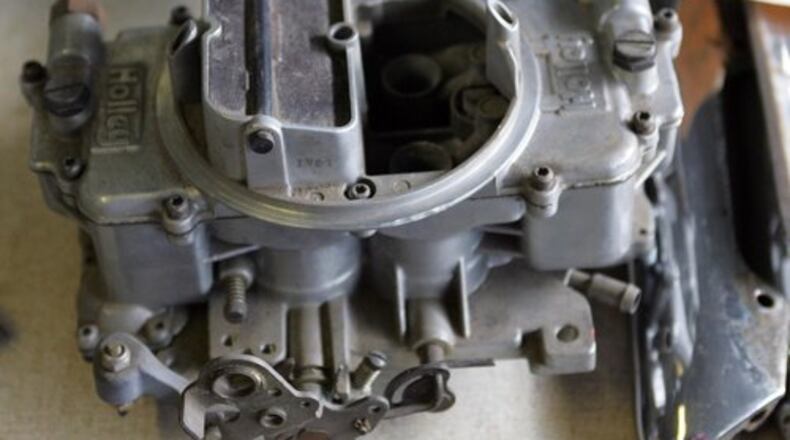I’ve owned this for 48 years. Other than installing an electric fuel pump, do you have any input on what may cause this? Thanks, and stay safe. -- John
RAY: That’s the built-in anti-theft device, John. Actually, your theory is logical, John. But also wrong. Just like lots of my theories.
Your problem is not that gasoline is flowing out of the carburetor and back down the fuel line to the gas tank. The problem is that gasoline is leaking out of the float bowl and evaporating.
Here’s how it all works. When you shut off the engine, your carburetor stores a bunch of fuel in the float chamber. That’s the fuel that’s used next time you start the car.
In fact, if you severed the fuel line that comes from the tank, your car would still run for a good minute or more just on the fuel stored in the carburetor. But then you’d have to write me about how to replace a fuel line, so don’t do that.
Anyway, it takes the fuel pump many seconds -- all while you’re cranking and cranking the starter -- to get enough new fuel to the carburetor to run the engine.
Normally, that would be no problem, because, as I said, you’ve got plenty of fuel sitting in the carburetor until the fuel pump catches up.
But in your case, during those few weeks that the car sits, fuel is leaking out of your carburetor, perhaps into the intake manifold, and evaporating. So, when you go to start the car, the float chamber is dry.
Now, you could, I suppose, install an electric fuel pump with a switch on the dashboard. And you could turn on the switch a few seconds before you want to start the car. And that would fill up the carburetor.
But you’d be smarter to just replace the carburetor. It may have a crack or some other problem that’s causing gasoline to leak out. And if you eliminate that leak, who knows, you may go from 9.4 miles per gallon up to 9.5.
Lucky break -- hopefully -- after a jumper cable mishap
Dear Car Talk:
Several weeks ago, I was waiting in a parking lot and I was asked if I had any jumper cables. I did.
The guy who asked said an approaching pickup truck offered him a jump but didn’t have cables. While the pickup was being positioned, I attached the cables to the dead car’s battery -- properly (red to positive, black to negative).
When Pickup Driver took the other end of the cables, I said “be sure to put the red clamp on the positive terminal.” He retorted, “I know what I’m doing!” Well, he didn’t. When he put them on, the red clamp on the dead car literally fried, melted part of it and popped off -- he had reversed them.
He got really irate when I told him he had them on the wrong terminals, instead of owning up to his mistake. When he did put them on the correct terminals (I checked), I was able to put the damaged clamp back onto the positive terminal of the dead car’s battery, and the car started.
The owner of the dead car volunteered to buy me new jumper cables, which I refused. But it left me curious. So far as I could tell, the only damage was to the cable clamp on my jumpers. It was minor enough that when I got home, I fixed it with my Dremel, and it’s still very usable.
But did that mistake likely cause any damage to either the dead car or the pickup? If so, which one was likely damaged? -- Cary
RAY: Either one could have been damaged, Cary, but it sounds like neither one was (sorry, I know you were rooting for the pickup to be fried).
My guess is that the spark that occurred when the pickup guy hooked up the final wrong cable blew the clamp off the battery before any electronics could be damaged.
Of course, that’s a guess on my part. For all I know, the pickup truck driver may be setting his seat heaters to “char” every time he turns on his windshield wipers now. And the other guy’s AM radio may be coming through his heater vents.
While it’s certainly possible that electronic damage can show up later if an electronic module was damaged, it often reveals itself right away. So, I’m going to remain hopeful that your jumper cables were the only victims here.
Had the cable remained on there even a little longer, there are plenty of electronics that are sensitive to voltage surges. Most modern cars now have 30, 40 or 50 computer modules that have a hand in everything from engine management to power windows. That’s where the damage would be found.
But I think you all got a lucky break, Cary. Pass along our get-well-soon wishes to your jumper cables.
Got a question about cars? Write to Ray in care of King Features, 628 Virginia Drive, Orlando, FL 32803, or email by visiting the Car Talk website at www.cartalk.com.
About the Author

